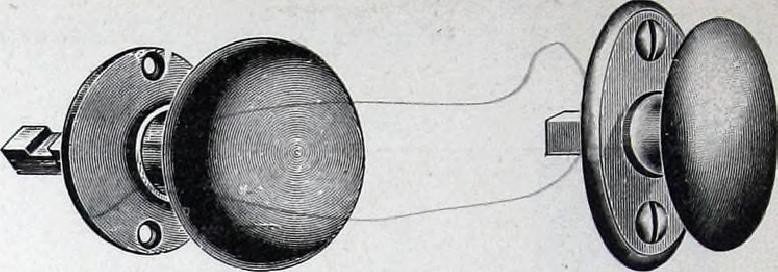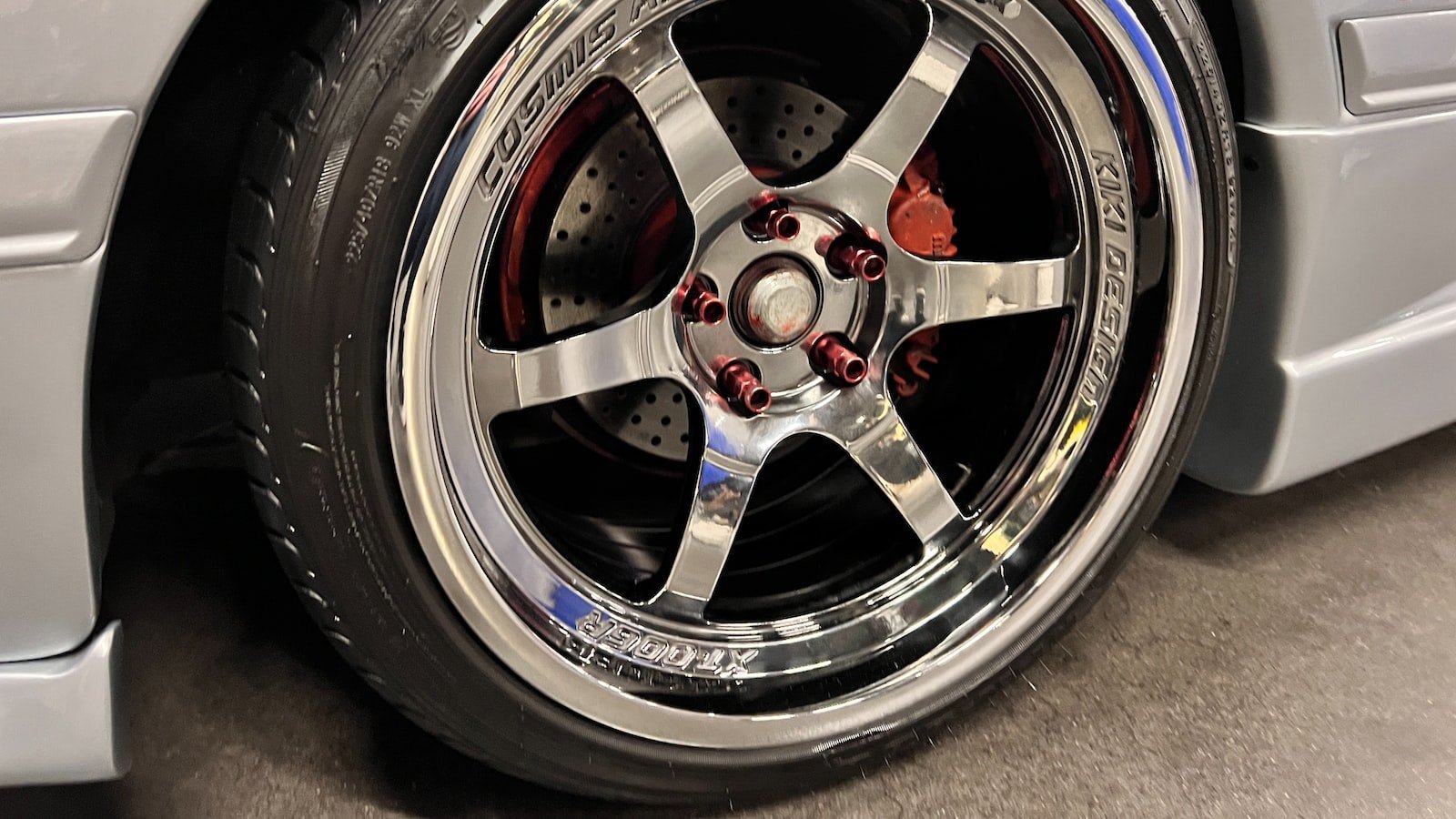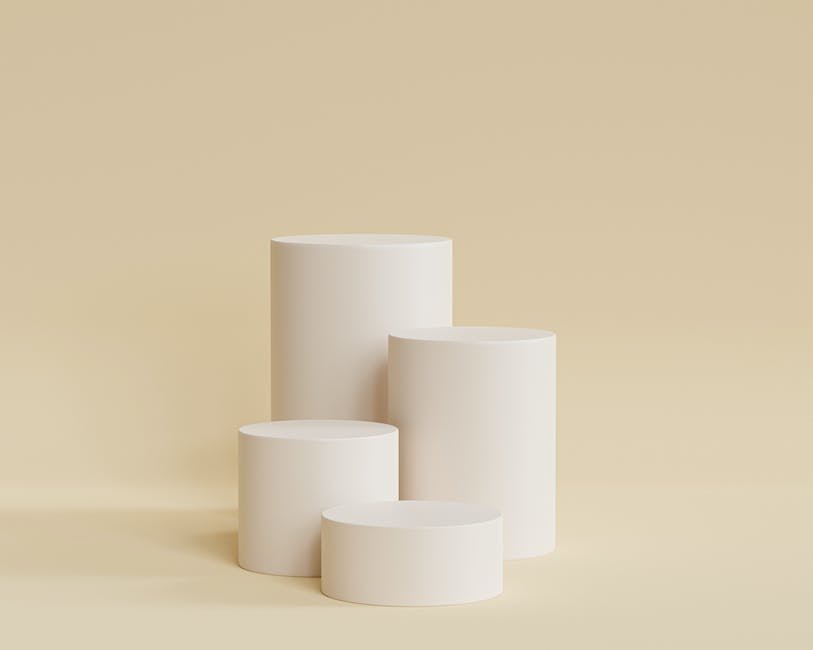Ever wondered about the intricate mechanisms that safeguard your humble abode? Look no further than the unassuming rim cylinder lock, a true hero in the realm of home security. While its unpretentious appearance may fool the untrained eye, don’t be deceived: within this unremarkable cylinder lies a fascinating labyrinth of pins, springs, and cams that collaborate flawlessly to keep unwelcome intruders at bay. In this step-by-step guide, we will unravel the enigma of how a rim cylinder lock works, allowing you to appreciate the remarkable craftsmanship and ingenuity that goes into defending your sanctuary. So, prepare to embark on a captivating journey into the inner workings of your lock, where every twist and turn reveals a tantalizing secret. A world that is both captivating and clandestine, the realm of rim cylinder locks awaits your discovery.
Table of Contents
- Introduction: Understanding the Basics of a Rim Cylinder Lock
- Anatomy of a Rim Cylinder: Components and Mechanisms Explained
- Step-by-Step Guide: How to Install a Rim Cylinder Lock
- Key Considerations: Choosing the Right Rim Cylinder for Your Door
- Maintenance Tips: Ensuring Optimal Performance of Your Rim Cylinder Lock
- Q&A
- To Conclude

Introduction: Understanding the Basics of a Rim Cylinder Lock
A rim cylinder lock is a type of lock commonly used in residential and commercial properties. It is named “rim” because it is mounted on the surface of the door rather than being embedded within it. This type of lock is known for its simplicity and ease of installation, making it a popular choice for many homeowners and businesses.
At its core, a rim cylinder lock consists of a cylinder, which contains the key mechanism, and a latch bolt that secures the door. When the correct key is inserted into the cylinder and turned, the latch bolt is retracted, allowing the door to be opened. This straightforward mechanism is what makes rim cylinder locks so reliable and user-friendly.
One of the key advantages of rim cylinder locks is their versatility. They can be used on both left-handed and right-handed doors, and can easily replace existing locks without the need for extensive modifications. Additionally, rim cylinder locks can be rekeyed, allowing for easy control over who has access to the property. This feature makes them ideal for rental properties, where tenants may come and go frequently.

Anatomy of a Rim Cylinder: Components and Mechanisms Explained
When it comes to understanding the inner workings of a rim cylinder, it’s essential to know the various components that make up this crucial security device. Below, we delve into the intricate mechanisms and intricate components that come together to ensure the smooth functioning of a rim cylinder.
1. Outer Housing:
The outer housing serves as the protective shell of the rim cylinder. Typically made of durable materials like brass or stainless steel, it shields the internal mechanism from potential damage and tampering.
2. Keyway:
The keyway is the specific channel where the key is inserted. It is strategically designed to accommodate a specific key profile, ensuring that only the appropriate key can successfully engage the cylinder’s mechanisms.
3. Cylinder Plug:
Located inside the outer housing, the cylinder plug is the central component of the rim cylinder. It houses the key pins and driver pins, which align precisely with the cuts on the key to allow for smooth rotation when the correct key is inserted.
4. Key Pins:
Key pins are tiny cylindrical pins found in the cylinder plug. They are of varying lengths, and each corresponds to a specific depth or cut on the key. When the correct key is inserted, the key pins align at the shear line, enabling the plug to rotate freely.
5. Driver Pins:
Driver pins, also located in the cylinder plug, work alongside the key pins. These pins are different lengths from the key pins and sit above them. They are pushed downwards by springs, creating a barrier that prevents the plug from rotating until the correct key is inserted.
6. Springs:
Springs are integral to the functioning of a rim cylinder. They provide tension on the driver pins, pushing them upwards, and maintain contact between the key pins and the cylinder plug.
Understanding the anatomy of a rim cylinder enables you to appreciate the technical complexities that go into securing your property. By familiarizing yourself with these components, you gain a deeper insight into the mechanisms that ensure your lock operates safely and efficiently.

Step-by-Step Guide: How to Install a Rim Cylinder Lock
Installing a rim cylinder lock is a straightforward process that can enhance the security of your door. Follow these easy steps to ensure a successful installation:
Gather the necessary tools:
- A rim cylinder lock kit
- A screwdriver
- A measuring tape
- A pencil
- A power drill with the appropriate drill bits
Prepare the door:
- Remove the existing lock and any old strike plates using the screwdriver.
- Measure and mark the appropriate height for your new lock with the pencil, ensuring it aligns with the existing keyhole.
- Using the power drill, carefully create the necessary holes for the lock’s mounting screws and the cylinder.
Install the rim cylinder lock:
- Insert the lock cylinder into the hole in the door, aligning it with the keyhole on the outside.
- Secure the cylinder in place using the provided mounting screws.
- Attach the strike plate onto the door frame, checking that it aligns with the latch bolt when the door is closed.
- Test the lock’s functionality by turning the key and ensuring smooth operation.
You have now successfully installed a rim cylinder lock on your door! Remember to keep the lock components well-maintained for optimal security and longevity.

Key Considerations: Choosing the Right Rim Cylinder for Your Door
When it comes to choosing the right rim cylinder for your door, there are several key considerations that you should keep in mind. These considerations will ensure that you select a cylinder that not only fits your door but also enhances its security and functionality. Here are some factors to consider before making your decision:
1. Door Thickness: One of the most important factors to take into account is the thickness of your door. Rim cylinders come in various sizes, so it’s crucial to choose one that matches the thickness of your door. Installing a cylinder that is too long or too short can compromise the effectiveness of your door’s locking mechanism.
2. Security Level: Different rim cylinders offer varying levels of security. It’s vital to assess the level of security needed for your specific door. Look for cylinders that incorporate features such as anti-pick pins, drill-resistant materials, and hardened steel construction. These security features can significantly enhance your door’s resistance to break-ins and unauthorized access.
3. Key Control: Consider whether you require a high level of key control. Some rim cylinders offer restricted key systems, which means that the keys can only be duplicated by authorized individuals. This feature is particularly important for buildings that require strict control over key distribution, such as commercial properties or multi-unit residences.
4. Aesthetics: While functionality and security are of utmost importance, don’t forget to consider the aesthetic appeal of the rim cylinder. Choose a cylinder that complements the overall look of your door and its surroundings. Customizable options such as color and finish can help you achieve a cohesive and visually pleasing result.
Remember, selecting the right rim cylinder for your door is critical for both security and overall satisfaction. By considering factors such as door thickness, security level, key control, and aesthetics, you can ensure that your choice meets your specific needs and preferences.
Maintenance Tips: Ensuring Optimal Performance of Your Rim Cylinder Lock
Maintaining your rim cylinder lock is crucial to ensure its optimal performance and longevity. Here are some essential tips to keep in mind:
- Regular Lubrication: It is recommended to lubricate your rim cylinder lock at least once a year. Apply a graphite-based or silicone spray lubricant to the keyway, latch, and deadbolt components. Avoid using oil-based lubricants as they can attract dirt and debris, causing the lock to malfunction.
- Inspection and Cleaning: Periodically check your rim cylinder lock for any signs of wear, rust, or damage. If you notice any issues, it is important to address them promptly. Use a clean, soft cloth to wipe away dirt, dust, and debris from the lock mechanism. Avoid using abrasive cleaners that may scratch the surface.
- Test and Adjust the Strike Plate: Over time, the strike plate can become misaligned due to frequent use or house settling. Test the lock’s alignment by closing and locking the door. If the latch does not smoothly engage, you may need to adjust the strike plate by slightly loosening the screws and moving it to the correct position. After adjustments, tighten the screws to secure the strike plate.
- Keep Keys Clean and Avoid Force: Ensure your keys are clean and free from any dirt, grime, or sticky substances before inserting them into the lock. Also, avoid applying excessive force or twisting the key forcefully. Gentle and smooth key insertion and turning will help maintain the lock’s proper functionality.
By following these maintenance tips, you can ensure that your rim cylinder lock operates smoothly and reliably, providing you with the security and peace of mind you deserve.
Q&A
Q: What is a rim cylinder lock?
A: A rim cylinder lock is a type of lock that is mounted on the surface of a door rather than being installed within the door itself. It is commonly found in residential homes and offers a basic level of security.
Q: How does a rim cylinder lock work?
A: When a key is inserted into the lock, it turns the cylinder which activates the locking mechanism. The lock’s pins align with the notches on the key, allowing the key to turn freely. This action then aligns the internal components, allowing the door to be opened or locked.
Q: What are the main components of a rim cylinder lock?
A: The main components of a rim cylinder lock include the exterior housing, the cylinder plug, the tumblers or pins, the spring-loaded pins, and the tailpiece. These components work together to allow the lock to operate smoothly.
Q: How does the key interact with the lock’s components?
A: When the key is inserted into the lock, it pushes the spring-loaded pins towards the cylinder plug. The notches on the key are designed to lift each pin to a specific height, allowing the plug to rotate when the pins align correctly.
Q: Can a rim cylinder lock be easily picked or bypassed?
A: While no lock is completely impervious to picking or bypassing, rim cylinder locks with additional security features, such as security pins or side pins, can significantly increase resistance against these methods of attack. However, it’s always advisable to consult a professional locksmith for expert advice on improving security.
Q: Are rim cylinder locks suitable for all door types?
A: Rim cylinder locks are best suited for doors that aren’t thick enough to accommodate a mortise lock. They are commonly used on exterior doors, but can also be found on interior doors. However, for maximum security, it’s important to choose a lock that is appropriate for the door type and level of security required.
Q: How can I maintain and prolong the life of my rim cylinder lock?
A: Regularly cleaning the lock with a mild solvent and lubricating it with graphite powder can help maintain its smooth operation. Additionally, avoiding excessive force when inserting or turning the key, and keeping the lock protected from harsh weather conditions, can help prolong its lifespan.
Q: Can a rim cylinder lock be rekeyed?
A: Yes, rim cylinder locks can typically be rekeyed by a professional locksmith. Rekeying involves changing the lock’s internal pins to match a new set of keys, rendering the previous keys ineffective. This process adds an extra layer of security without having to replace the entire lock.
To Conclude
In conclusion, delving into the inner workings of a rim cylinder lock has illuminated the intricate mechanisms that ensure our safety and peace of mind. From the moment we slide our key into the lock, a symphony of gears and pins dance in harmony, seamlessly engaging and disengaging to grant us access to our abodes. The simplicity of its design, matched with its effectiveness, makes the rim cylinder lock a marvel of modern engineering.
However, beyond its functional brilliance, it is crucial to remember the importance of maintaining the upkeep and security of our locks. Regular maintenance, such as lubrication and occasional replacement of worn-out parts, not only extends the lifespan of our locks but also ensures their optimal performance and durability.
So, next time you find yourself inserting a key into a rim cylinder lock, take a moment to appreciate the intricate dance happening behind the scenes. A seemingly simple mechanism holds within it the power to safeguard our homes, our belongings, and most importantly, the ones we hold dear.
As an affiliate, my content may feature links to products I personally use and recommend. By taking action, like subscribing or making a purchase, you’ll be supporting my work and fueling my taco cravings at the same time. Win-win, right?
Want to read more? Check out our Affiliate Disclosure page.